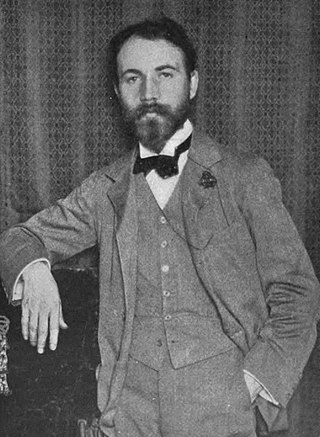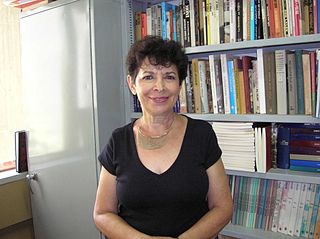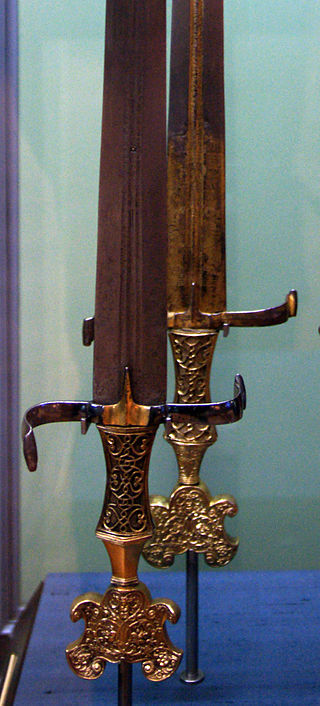Related Research Articles

Girolamo Savonarola, OP or Jerome Savonarola was an ascetic Italian Dominican friar from Ferrara and a preacher active in Renaissance Florence. He became known for his prophecies of civic glory, his advocacy of the destruction of secular art and culture, and his calls for Christian renewal. He denounced clerical corruption, despotic rule, and the exploitation of the poor.

Tel Aviv University is a public research university in Tel Aviv, Israel. With over 30,000 students, it is the largest university in the country. Located in northwest Tel Aviv, the university is the center of teaching and research of the city, comprising 9 faculties, 17 teaching hospitals, 18 performing arts centers, 27 schools, 106 departments, 340 research centers, and 400 laboratories.

Bernard Berenson was an American art historian specializing in the Renaissance. His book The Drawings of the Florentine Painters was an international success. His wife Mary is thought to have had a large hand in some of the writings.

Hayim Nahman Bialik was a Jewish poet who wrote primarily in Hebrew but also in Yiddish. Bialik was one of the pioneers of modern Hebrew poetry. He was part of the vanguard of Jewish thinkers who gave voice to the breath of new life in Jewish life. Being a noted essayist and story-teller, Bialik also translated major works from European languages. Although he died before Israel became a state, Bialik ultimately came to be recognized as Israel's national poet.

Nechama Leibowitz was a noted Israeli Bible scholar and commentator who rekindled interest in Bible study.

Lucy Brocadelli also known as Lucy of Narni or Lucy of Narnia, was a Dominican tertiary who was famed as a mystic and a stigmatic. She has been venerated by the Roman Catholic Church since 1710. She is known for being the counselor of the Duke of Ferrara, for founding convents in two different and distant city-states and for her remains being solemnly returned to her home city of Narni on 26 May 1935, 391 years after her death.

Mary Berenson was an art historian, now thought to have had a large hand in some of the writings of her second husband, Bernard Berenson.
Judith C. Brown is a historian and a Professor Emerita of History at Wesleyan University. A specialist on the Italian Renaissance, she is considered a pioneer in the study of the history of sexuality whose work explored the earliest recorded examples of lesbian relationships in European history.
Marco Pellegrini was a Dominican friar and Vicar-General of the Dominicans in Lombardy from October 1506. As a novice he took part in the Coppini Mission to England. He was noted for his opposition to the doctrines of Savonarola and as Vicar-General implemented stern measures to stamp them out in religious houses.

Dina Porat is an Israeli historian. She is professor emeritus of modern Jewish history at the Department of Jewish History at Tel Aviv University and the chief historian of Yad Vashem.
Yardena Alotin was an Israeli composer and pianist. As a pianist and teacher, Alotin also wrote educational music and music for young musicians, such as Six Piano Pieces for Children. Alotin won the Nissimov Prize for her 1956 work, Yefei Nof.

Tamar Getter is an Israeli artist and teacher.
Camilla Adang is a Dutch associate professor of Islamic studies at Tel Aviv University in Tel Aviv, Israel.

Ercole dei Fedeli was an Italian goldsmith and master sword engraver. His name has also been recorded as Ercole da Ferrara, da Sesso, dei Fidelis, de Fedeli or de Fedelis.
Tamar Hermann is an Israeli professor of political science at the Open University and a Senior Fellow at the Israel Democracy Institute (IDI).
Hana Wirth-Nesher is an American-Israeli literary scholar and university professor. She is Professor of English and American Studies at Tel Aviv University, where she is also the Samuel L. and Perry Haber Chair on the Study of the Jewish Experience in the United States, and director of the Goldreich Family Institute for Yiddish Language, Literature, and Culture.

Noah Jonathan Efron is a professor at Bar-Ilan University, where he was founding chair of the interdisciplinary program on Science, Technology, and Society.

The Piagnoni were a group of Christians who followed the teachings of Girolamo Savonarola. The later Piagnoni remained in the Catholic Church and kept a mixture with the teachings of Catholic dogma and the teachings of Girolamo Savonarola. The name Piagnoni was given because they wept for their sins and the sins of the world.
Avinoam Shalem is the Riggio Professor of the History of the Arts of Islam at Columbia University. He served as director of the American Academy in Rome from 2020 to 2021.

Chaim Navon is an Israeli rabbi, philosopher, writer, and publicist.
References
- ↑ "Prof. Tamar Herzig". Tel Aviv University. Retrieved 2021-11-27.
- 1 2 3 Herzig, Tamar (2008). Savonarola's Women: Visions and Reform in Renaissance Italy. University of Chicago Press. ISBN 978-0-226-32915-4.
- ↑ Lowe, Kate (2010). "Review of Savonarola's Women: Visions and Reform in Renaissance Italy". The Catholic Historical Review. 96 (1): 121–122. ISSN 0008-8080. JSTOR 27806480.
- ↑ "The Center for Italian Studies". ccat.sas.upenn.edu. Retrieved 2021-11-27.
- ↑ "Prof. Tamar Herzig". Tel Aviv University. Retrieved 2021-11-27.
- 1 2 "Prof. Tamar Herzig". www.young.academy.ac.il. Retrieved 2021-11-27.
- ↑ "Tamar Herzig | I Tatti | The Harvard University Center for Italian Renaissance Studies". itatti.harvard.edu. Retrieved 2021-11-27.
- ↑ "The Morris E. Curiel Institute for European Studies". en-dacenter.tau.ac.il. Retrieved 2021-11-29.
- ↑ "Prof. Tamar Herzig". Tel Aviv University. Retrieved 2021-12-06.
- ↑ "Mediterranean Historical Review Editorial Board". www.tandfonline.com. Retrieved 2021-11-27.
- ↑ "ITS Editorial Board | I Tatti | The Harvard University Center for Italian Renaissance Studies". itatti.harvard.edu. Retrieved 2021-12-06.
- ↑ "Academic Board – The Medici Archive Project" (in Italian). Retrieved 2021-11-27.
- ↑ "החברה ההיסטורית הישראלית". www.historical.org.il. Retrieved 2021-11-27.
- ↑ "Herzig Tamar | Edizioni di Storia e Letteratura". www.storiaeletteratura.it. 2018-01-01. Retrieved 2021-11-27.
- 1 2 Caravale, Giorgio (2017). "Christ Transformed into a Virgin Woman: Lucia Brocadelli, Heinrich Institoris, and the Defense of the Faith. Tamar Herzig. Scritture nel chiostro; Temi e Testi 114. Rome: Edizioni di Storia e Letteratura, 2013. xix + 330 pp. €48". Renaissance Quarterly. 70 (4): 1592–1593. doi:10.1086/696468. ISSN 0034-4338. S2CID 165251329.
- ↑ "'Where there are many women there are many witches': The Social and Intellectual Understanding of Femininity in the Malleus Maleficarum (1486)". warwick.ac.uk. Retrieved 2021-11-29.
- 1 2 "A Convert's Tale — Tamar Herzig". www.hup.harvard.edu. Retrieved 2021-11-27.
- ↑ "Tamar Herzig, "A Convert's Tale: Art, Crime, and Jewish Apostasy in…". New Books Network. Retrieved 2021-11-27.
- ↑ "A Convert's Tale: Art, Crime, and Jewish Apostasy in Renaissance Italy | Reviews in History". reviews.history.ac.uk. 2020-06-19. Retrieved 2021-11-29.
- ↑ Katz, Dana E. (2021-06-29). "A Convert's Tale: Art, Crime, and Jewish Apostasy in Renaissance Italy. Tamar Herzig. I Tatti Studies in Italian Renaissance History. Cambridge, MA: Harvard University Press, 2019. viii + 388 pp. $49.95". Renaissance Quarterly. 74 (2): 650–651. doi:10.1017/rqx.2021.54. ISSN 0034-4338. S2CID 238056145.
- ↑ Herzig, Tamar (2022). "Slavery and Interethnic Sexual Violence". The American Historical Review. 127: 194–222. doi:10.1093/ahr/rhac011 . Retrieved 2022-05-26.
- ↑ Kitanovska, Simona; News, Zenger (2022-05-23). "Jewish women were raped by Muslims and Christians in medieval Italy to get ransom from local Jews: study". Newsweek. Retrieved 2022-05-26.
{{cite web}}:|last2=has generic name (help) - ↑ "La brutal violación de mujeres y niñas judías en una cárcel para esclavos del siglo XVII en Livorno". La Vanguardia (in Spanish). 2022-05-19. Retrieved 2022-05-26.
- ↑ "A rabszolgasorba taszított és megerőszakolt livornói zsidó nők története". Neokohn (in Hungarian). 2022-05-21. Retrieved 2022-05-26.
- ↑ "Gang Rape of Jewish Slave-women in Renaissance Italy Exposed by Historians". Haaretz. Retrieved 2022-05-17.
- ↑ "Livorno, ricostruito il dramma di 14 schiave ebree recluse nel 1610". La Nazione (in Italian) (published 2022-04-27). April 27, 2022. Retrieved 2022-05-17.
- ↑ "Carocci editore - Le donne di Savonarola". www.carocci.it. Retrieved 2021-11-28.
- ↑ "על סף העת החדשה: אירופה 1350-1600; כרך ג'". sheilta.apps.openu.ac.il. Retrieved 2021-11-28.
- ↑ Eliav-Feldon, Miriam; Herzig, Tamar, eds. (2015). Dissimulation and Deceit in Early Modern Europe. doi:10.1057/9781137447494. hdl:10278/3671285. ISBN 978-1-349-55889-6.
- ↑ Ben-Tov, Asaph; Deutsch, Yaacov; Herzig, Tamar; Ben-Tov, Asaph, eds. (2013-03-22). Knowledge and Religion in Early Modern Europe : Studies in Honor of Michael Heyd. Brill. ISBN 978-90-04-23148-1.
- ↑ Tamar, Herzig (2013). Christ Transformed into a Virgin Woman. Edizioni di Storia e Letteratura. ISBN 978-88-6372-526-1.
- ↑ "2022 June - Article of the Month". The Mediterranean Seminar. Retrieved 2022-07-17.
- ↑ "Bruno Laureates". iias.huji.ac.il. 2021-11-01. Retrieved 2021-11-28.
- ↑ "The Phyllis Goodhart Gordan Book Prize". The Renaissance Society of America. 28 November 2021.
- ↑ "2020 Awards, Prizes, and Honors Announced | Perspectives on History | AHA". www.historians.org. Retrieved 2021-11-28.
- ↑ "BOG 2019: Kadar Family Award for Outstanding Research". Tel Aviv University. 2019-06-06. Retrieved 2021-11-28.